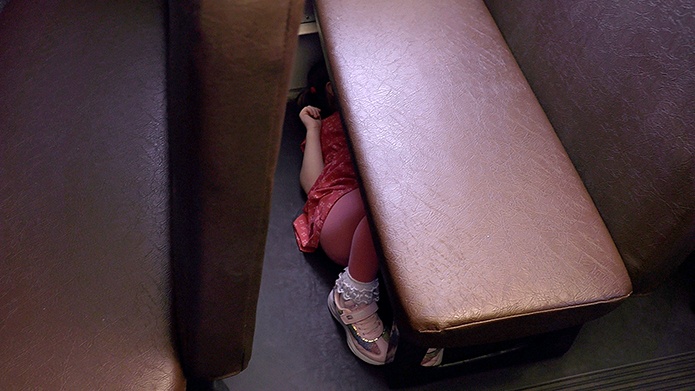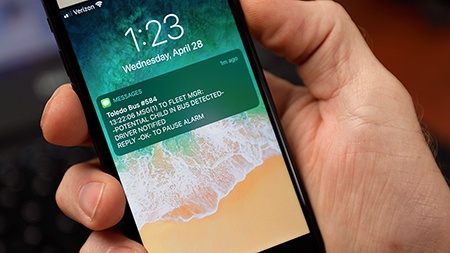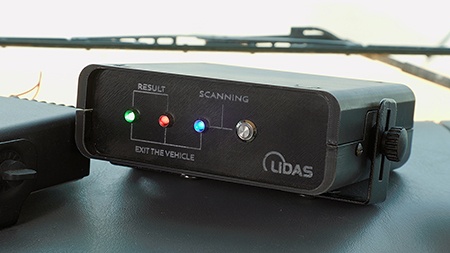
Are you really doing everything you can to make sure the children in your care are getting safely to and from school?
 Yes, state governments mandate that no child shall be left on a school vehicle. And school districts and transportation contractors require extensive training for drivers. They also equip their vehicles with cameras and other technology and even have an additional vehicle monitor to assist in finding children that may be left on the vehicle. Yet incidents of kids-left-on-buses still happen on a regular basis.
Yes, state governments mandate that no child shall be left on a school vehicle. And school districts and transportation contractors require extensive training for drivers. They also equip their vehicles with cameras and other technology and even have an additional vehicle monitor to assist in finding children that may be left on the vehicle. Yet incidents of kids-left-on-buses still happen on a regular basis.
Driver negligence or inexperience is often cited in some cases. But unfortunately, even the most experienced drivers have left children unattended on school vehicles. The penalty is often driver termination, and in some extreme cases, imprisonment.
How can it be that even an experienced driver can leave a child on a vehicle when they know it is their primary responsibility to get them to and from school safely?
Dr. David Diamond, a professor of neuroscience at the University of Southern Florida provides insight from years of research into how parents or caregivers can forget and leave children in hot cars. Dr. Diamond hypothesizes that this oversight occurs because of the “competition between the brain’s habit memory and its prospective memory system” with the habit memory prevailing1. Thus, when a school bus driver s earches their bus after each run, day after day, in search of children left behind, they form habitual memory — that no children are found on the bus. Now add a change of some sort or a distraction and the prospective memory (i.e., search the bus for children left behind) can fail. In addition, the mind can even create a false memory that the task (e. g. searching the vehicle for children) is performed when in reality it was not.2
 At our organization we have developed a technology that can assist vehicle operators and transportation managers to overcome this failure – LiDASTM, or Life Detection Assistance System, a state-of-the-art, turn-key, child detection system that can recognize children (or any living being) inadvertently left behind on school transportation vehicles.
At our organization we have developed a technology that can assist vehicle operators and transportation managers to overcome this failure – LiDASTM, or Life Detection Assistance System, a state-of-the-art, turn-key, child detection system that can recognize children (or any living being) inadvertently left behind on school transportation vehicles.
In installing this technology, we place an array of radar sensors around the vehicle that include sophisticated, patented pattern recognition software. A central control unit with a wireless communication modem manages the function of the system, while a driver interface provides feedback on system status and operation to the vehicle’s operator. Highly customizable (allowing for detection escalation, pre- and post-route, and cyclic checks) and fully automated, performance is unaffected in any lighting conditions, mechanical or audible disturbances and independent of temperature. Notification methods include text messages, alarms, horn honking, flashing lights, and more. Its cloud-based nature – increasingly prevalent in pupil transportation technology – allows for real-time communication and data retention.
Here is a typical basic setup: LiDAS is set to standby when the vehicle’s ignition is switched to on and is put into action after the ignition is switched off (after a predetermined delay time for driver post route tasks). The vehicle is scanned in roughly one minute and will immediately send out an SMS text message to the predetermined appropriate person if a child is found on the vehicle or if a system malfunction is detected. Even if a child is sleeping under a seat bench and it is dark, the system will find the child and send out a notice. All results, including ‘vehicle all clear’ are sent to a cloud-based storage for retrieval and review at any time.
Technology like this is not meant to eliminate the operator’s responsibility to search the vehicle for children that did not get off the vehicle; it is meant to be an additional tool to help make sure every child gets to school and returns home at the end of the day.
1(D. Diamond, June 2016, Children dying in hot cars: a tragedy that can be prevented, The Conversation online)
2(D. Diamond, April 2019, When a child dies of heatstroke after a parent or caretaker unknowingly leaves the child in a car: How does it happen and is it a crime?, Medicine, Science and Law 2019 59:2, pp. 115-126)
Dr. Joseph M. Funyak is senior vice president – Transformative Products & Technologies, for IEE Sensing Inc. Visit www.iee-sensing.com for more information


